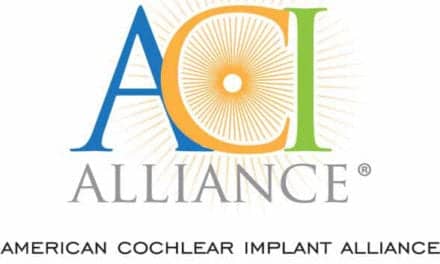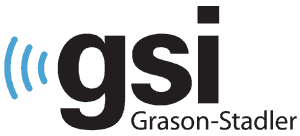A new generation of assistive listening devices get a second look by industry professionals who serve consumers experiencing early hearing loss.

Life is getting noisier with each passing day, and as a result, Americans are losing their hearing earlier. A growing number of hearing care professionals are seeing patients in their 40s and 50s complaining that things just do not sound as clear as they used to. Thomas Balkany, MD, a professor of otolaryngology at the University of Miami, told US News & World Report, “I am seeing middle-aged patients who have the kind of hearing we’d expect to see in their parents.” Statistics support this expert’s observations.1 According to the National Health Interview Survey, from 1971 to 1990 people ages 45 to 64 with hearing problems increased 26% and those ages 18 to 44 increased 17%. This increase in early hearing loss affects not only an individual’s personal and social life, it significantly impacts workplace productivity.
Effectively Managing Patient Expectations
As a hearing care professional, how do you effectively manage the expectations of potential patients with significantly different profiles? While a younger patient may understand the technicalities of the benefits of a hearing aid better than the 75 year old, the 45-year-old patient may be far more reluctant to purchase one. Hearing care professionals cannot afford to treat just a patient’s ears with hearing aids. They must treat their lifestyle. A 45- to 55-year-old patient is most likely very active in the workforce, is active socially, and is more concerned with the aesthetics of a hearing aid. In addition, younger patients are most likely well-trained consumers who do their homework prior to making a large purchase. They will be more apt to realize the hearing aid is not a panacea. These patients are better served, are more satisfied, and become loyal customers when they are sold a complete hearing care solution rather than just a hearing aid. In an article that appeared in an issue of Hearing Health (2001), Max Stanley Chartrand, PhD, writes, “In truth, the problem isn’t with the technology. But what some professionals don’t tell you is that hearing aids are of limited value—without a comprehensive hearing health program….” “There is no magic one-solution-fits-all technology. Anytime a hearing health care professional suggests that a new hearing aid alone will meet your communication needs, it’s time to move on.” Although the technology that drives the power of hearing aids is constantly improving, the fact remains that, without a complete hearing health care program, the hearing aid loses some of its effectiveness. This is especially true for younger patients who are still very active in every aspect of their life. These educated consumers will be looking to the hearing care professional for “communicative wholeness.”2
Chartrand continues in his article, “Decades of successful experiences in hearing health and occupational therapy have convinced us that a combination of technology and strategy is necessary for achieving communication wholeness.” “In addition to hearing aids, attention must be paid to assistive devices, coping strategies, and information about empowerment….” He continues to say, “Perhaps the most grossly overlooked technology within the hearing profession is that of assistive listening devices (ALDs). No evaluation of hearing loss is complete without a needs assessment….”
The hearing care professional is faced with an ever-changing market landscape. Patients are more diverse; they are more informed and willing to be advocates for their own health care. Their expectations are higher and their patience for incomplete solutions shorter. With the business model in the hearing aid industry of no fee for service, professionals face an even greater challenge. How does the professional balance the amount of time invested in the sale of the hearing aid with the presentation of additional product solutions along with the explanation that, although the hearing aid costs anywhere from $800 to $5,000, it will not solve all of the hearing problems. A simple return on investment (ROI) analysis will clarify the value of providing a complete hearing care package to your patients.
Developing Patient Loyalty and Profitability
It is evident that by simply packaging the hearing aid along with multifunctional, feature-rich ALDs, the return on investment improves. There is not only an immediate increase in profitability, the patient experiences a significant improvement in overall satisfaction and quality of life, which leads to deeper patient loyalty and future profitability with an insignificant increase in the patient’s cost. In addition, there is a measurable reduction in return rates, which, according to industry statistics, run between 18% and 22%. A reduction in a return rate of 50%, for example, can increase profitability by over 500%.
Now, how does the hearing care professional choose an appropriate, effective line of ALDs to offer?
A complete hearing care solution should include devices that address the various lifestyle needs of the patient. Telephone use, alerting, TV listening, meetings, conferences, and unique personal listening situations are only some of your patients’ lifestyle needs. Effective ALDs should be multifunctional, cost-effective, feature-rich yet simple to operate. They must address the diverse needs of the patient while offering enough functionality to limit the need for multiple products.
For example, when offering an amplified telephone, make sure the phone offers features that will address the patient’s immediate as well as future needs such as a situational boost button that enables the user to add an extra 10 dB of gain only when needed without changing the settings of the volume and tone controls. Also, the phone should provide features that benefit both the older patient as well as the younger patient. A 45-year-old patient may be turned off by a device that looks too “medical” and will expect all telephones to have caller ID.
Offer products that address home, work, entertainment, and travel in a single device. A handheld personal listening system is a wonderful complement to the hearing aid, such as one that can be used with or without a hearing aid, and provides solutions for personal listening situations, TV listening, and telephone amplification. Preferably a device that is simple, stylish, and multifunctional, and enhances the overall effectiveness of the aid.
The positive impact that ALDs provide your practice and your patients is substantial enough to outweigh concerns of diluting focus or reducing hearing aid sales. Packaging ALDs with the hearing aid and presenting the patient with a holistic hearing care solution can result in increased sales, reduced returns, and improved patient loyalty.
Michele Ahlman is the vice president of HITEC Group International Inc, Burr Ridge, Ill. The company offers a complete line of assistive listening devices and expert knowledge in developing ALD programs for the audiology community.
Resources
1. Couzin JM, Kulman L, Terrell K. What’d you say? A high-volume world takes a toll on younger ears [electronic version]. US News & World Report. 1999;126(16):66-68, 71-74.
2. Chartrand MS. Maximizing your hearing dollar [electronic version]. Hearing Health. 2001;17(3).





